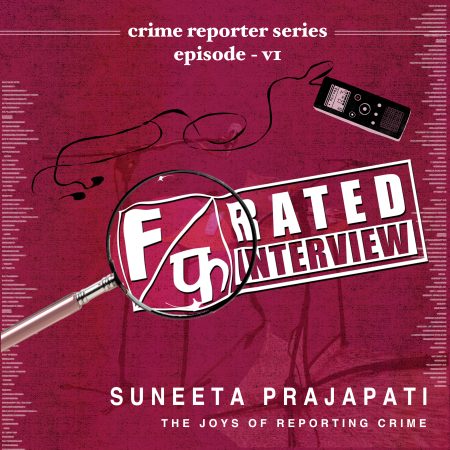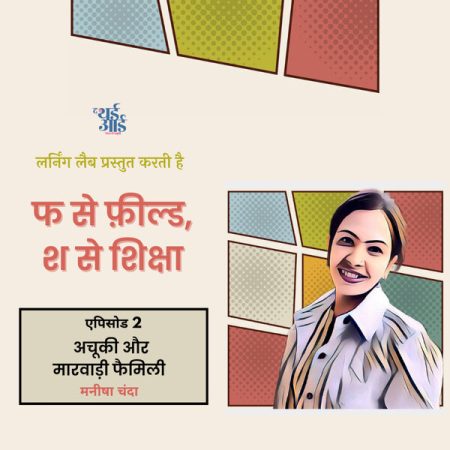“This is Asur Akhra Radio, we will dance… we will play… we will sing…”
In the bazaars of Latehar and Gumla districts, some 200 km from Ranchi, Jharkhand, the energetic beating of drums and the collective voices of women draw market goers towards them. The women are carrying public-address (PA) systems projecting stories, songs and the news of the week. Welcome to Asur Radio.
We spoke to Vandana Tete, Jharkhandi scholar, Adivasi activist and co-founder of Asur Radio, to hear about the joys of instrumentalising WhatsApp, learning to send voice notes, recording and rewriting folk songs, and the everyday act of resistance through remembering.
TTE: How was Asur Radio established?
Vandana: We decided we’d start the Asur Adivasi Radio, together with our allies and supporters from the Asur community in 2019. We started recording it amongst our group of 15. There are many types of people in our group—daily wage workers, agricultural labourers, housewives, singers, and writers—all of whom are included in the production of the programmes.
People often ask us that if you are running Asur Radio, then you must be using frequency. But that is not the case. Mobile signals and radio frequencies are tough to catch and expensive where we live. We decided together that we would broadcast this radio programme only through the PA system which is well within our means.
Both young and old people from the community record songs and send them to us. We transfer these songs and the radio programme onto the PA system in a pen drive. This PA system is carried around in the communities and the weekly bazaar, and songs are played on the system for the duration of the radio programme, which is about half an hour but is played on repeat at intervals of two to three hours. (The weekly bazaar or the haat is the most special day of the week in Gumla and Latehar districts that people from the villages and mountains flock to. There is always a fair-like atmosphere here. People entertain, buy goods and meet each other.) It is here that we take our recorded programmes on our PA system. Our volunteers carry the entire system, along with the sound box, on their heads, on bicycles, or in a dump truck, and take it to the markets.
News, talks, old folk songs and folk stories are all featured on the show. We narrate all of this on the radio. Along with this, we share important news from around the country and the world with them. We also try to share local news from surrounding tribal villages.
We started the Asur Adivasi programme in 2019, but then Covid happened and our work took quite a hit. We live in Ranchi and the community lives in a remote area in Netarhat Hills inside the jungle, so we tried our best to avoid travelling there. We would have never been able to forgive ourselves if we took the virus to them.
Why was radio, in particular, chosen as a form to preserve the Asur language?
Erasure lies not just in forgetting but also in being subsumed under mainstream and rewritten histories, the influence of which had already reached here and crept into the everyday lives of the Asur Adivasi people.
They hesitated to speak their own language and an inferiority complex had seeped in. This feeling was not only confined to the smaller tribes who live in the mountains, but also within the larger tribal communities living in the cities.
Even in school, children are not allowed to speak in their own language, making it impossible for them to read and write. We tried hard to first make contact with the children. Working with them, especially young students, has been a blessing and a mutual learning experience. They caught on to using mobile phones quite fast and this helped sustain our radio programme during Covid. Word spread, not only in the Gumla district where we work but also in other areas like Palamu, where children saw and heard our work and called us. They started recording their local songs as well as conversations about the everyday on mobile phones and sent them to us.
We are delighted that it is the Asur Adivasi youth that is connecting with us the most. They have become politicised and are forming an understanding of their self in relation to their language, literature and culture.
In broad terms, young people are thinking about what we call water, jungle and land.
Did Jharkhand’s independent statehood affect language, culture and your work, out of which Asur Radio has emerged?
The primary catalyst in Asur Radio’s formation does date back to Jharkhand’s struggle for independent statehood wherein preserving Jharkhandi language and culture was very much at the centre.
Jharkhand was born and a new government took over, but as is the case with the formation of any new state, issues and questions relating to preserving its identity, its culture and language took a backseat.
None of these were priorities on the government’s ‘development’ agenda. A lot of NGOs were shifted to the capital city of Ranchi, so woh jo Jharkhand ko Jharkhand banaata tha (all that gave Jharkhand its unique identity)—all of it was subsumed under questions of economic development. These were the dominant questions then, and they continue to be so even today. At the time when all of this was unfolding, I wasn’t in Jharkhand, I was outside, finishing my higher studies. When I returned, I realised I was coming back to a completely transformed landscape. My own socio-cultural identity and existence were at odds with the spaces and people around me. Jharkhand was no longer how I had left it.
My maternal grandfather, Pyara Kerketta, was a teacher, writer and social reformer. He had opened many schools in Jharkhand and had written several books in his mother tongue. Together with the people who had worked closely with him and had also been a part of the struggle for Jharkhand’s separate statehood, we decided to start a foundation and a trust in his name. This trust would carry forward the legacy of his work and focus on the cultural issues of the indigenous people of Jharkhand. We managed to organise a three-day seminar in which quite a few Jharkhandi intellectuals and litterateurs participated and out of that, the Jharkhandi Bhasha Sahitya Sanskriti Akhra was born in 2003. We also started a magazine with the same name.
How did you embed yourself within the community? You must have encountered quite a few challenges.
Within a year of our Akhra’s inception, in 2004, we reached out to our people at the grassroots and started working with them. It was possible for us to stay connected with other tribal communities through cell phones, but not with the Asur people. It was nearly impossible for us to take our programmes to them.
There are no roads. To date, there is no mobile connectivity in Netarhat [a hilly area in Latehar district]. The entire area is a hub of bauxite mining. In order to use a mobile, one has to go to a particular place or climb up a tongari (hill), or even climb a tree.
The other option is to come to the city for connectivity. It was expensive and time-consuming.
In the midst of these problems, we were also contemplating our principles, our ideology, our vision—how should we convey what we want to, to our people, our youth, elderly women, and men? On the one hand, there was the danger of not being able to connect without the use of technology, and on the other, there were also fears and suspicions surrounding the use of technology, especially since copy-pasting, stealing of creative labour and plagiarism are real concerns.
There are 25 Adivasi communities in Jharkhand, out of which eight are the most resource-deprived and Asur Adivasi is one of them. You primarily work with people from the Asur tribe and most of your programmes are in the Asur language. Are there possibilities of slowly incorporating the languages of the other eight Adivasi groups and producing radio programmes for and with them?
Most of our radio content is in the Asur language but it can reach other Adivasi groups as well. Asur Adivasi community is an Austroasiatic tribal group or what we call the Munda tribal group. Hence, the other Munda tribal groups who speak Mundari or Santhali can understand the Asur language and our programmes because the dialect is similar.
Ever since we started uploading our stories and radio programmes on YouTube, Asur Adivasi youth have connected with each other across states—in Jharkhand, Tripura, and even Bengal!
That’s fantastic! Since you mentioned reaching out to other Adivasi groups, I want to ask you about the training aspect of your work. How do you go about undertaking training with the community, whether it is with the young school-going girls or Asur Adivasi youth groups?
I’ll be honest with you. Holistically, the training aspect of our work has been one of our weak links due to a variety of reasons. Lack of resources is the most prominent one. But we have figured out creative ways to maintain links with the community, played around with technology and maintained this channel of exchanging creative voices with them.
Sometimes, when no one from the team is able to go to their village in time for recording a new radio programme, we ask the community members, especially the ones who are not familiar with technology, to seek the help of students around them. Students toh har jagah mil hi jaate hain, so the students help the community elders to record and send their recordings to us on WhatsApp. Sometimes, if they are in the bazaar and find something interesting to tell us about, they will ask a passer-by or some kind soul to click that photo and send it to our number.
They are able to use smaller phones to call, but face difficulties reading, writing, recording and editing on the phone. Most phones only have English or Hindi as an operating language. Since people here are mostly familiar with their indigenous language and do not know how to read or write much, it becomes tricky to do technical training. Even people from the community who have been part of our team for many years know how to change the sound bank and operate it using a pen drive, but their recording and editing skills need work.
What kind of stories does the community record and send for the radio programme?
During Covid, many stories emerged from the community on what the pandemic unleashed on them. A lot of people had migrated to the big cities to work and were forced to return as Covid hit. In our conversations with the community in those times, the returning migrants shared a lot of stories —of crisis, of loss, of despair and sometimes of resilience.
However, I’d say our focus is on giving a platform to Asur Adivasi folktales and stories. The purkha stories range from details about the simplicity of Asur marriages to the kind of loha, lakdi, koyila (iron, wood and coal) that is used across different tribal communities. For mainlanders and the outside world, it may be normal to adapt and adopt newer forms of storytelling and entertainment, but for us Adivasis: humaari toh naani-daadi ki kahaaniyon mein hi kitna kuch basaa hai. (There’s an abundance of knowledge in our grandmothers’ stories).
We cannot afford this loss; it would be an epistemological loss.
What would you say have been your biggest learnings from this pedagogy—of the self and of the community? How do you imagine the way forward?
At this stage, it is crucial that more people get to know about this radio programme, especially local tribal communities. We have to constantly think of evolving newer ways to reach out to more people and in more creative formats.
Many storytellers are associated with us. Many of them are women and we can see how validating and fun it is for them to record and preserve so much from their minds and hearts! When we started out, it was a one-way effort and we were mostly brainstorming among ourselves. But now, we see Asur Adivasi Radio as a thriving community of creative co-producers, and there is no greater happiness than this.

The so-called mainstream has the habit of making us very lonely, very small, and not letting us think beyond our personal selves. But when you think about working within a community, you feel a deeper connection with yourself, your history, and your culture.









